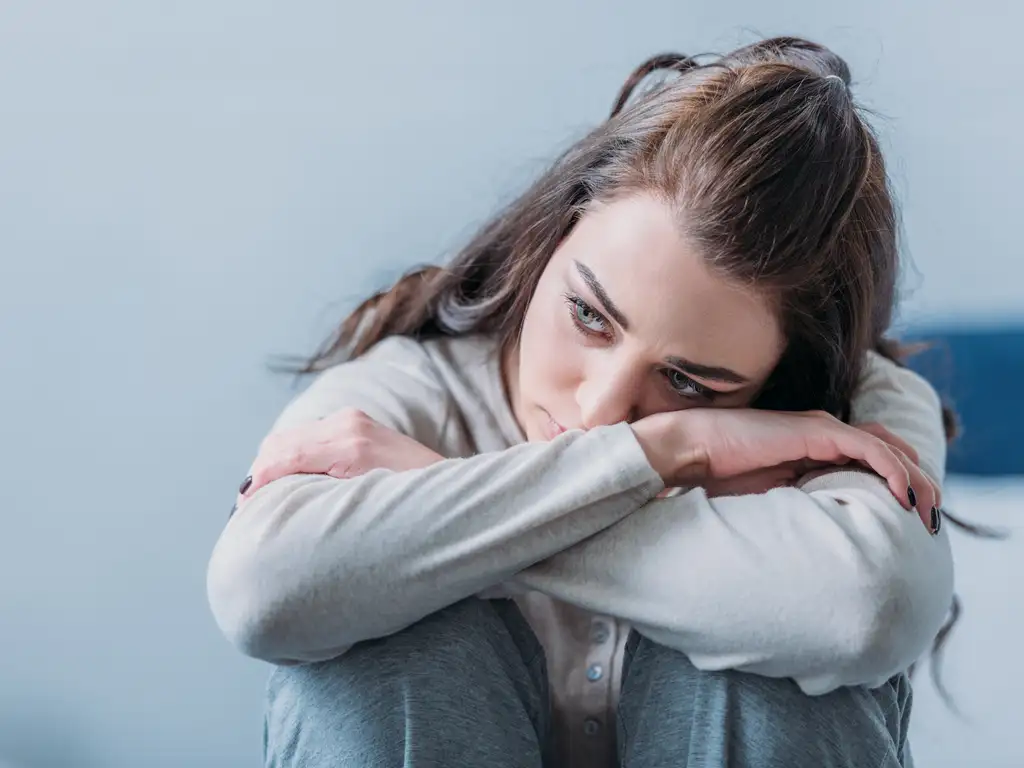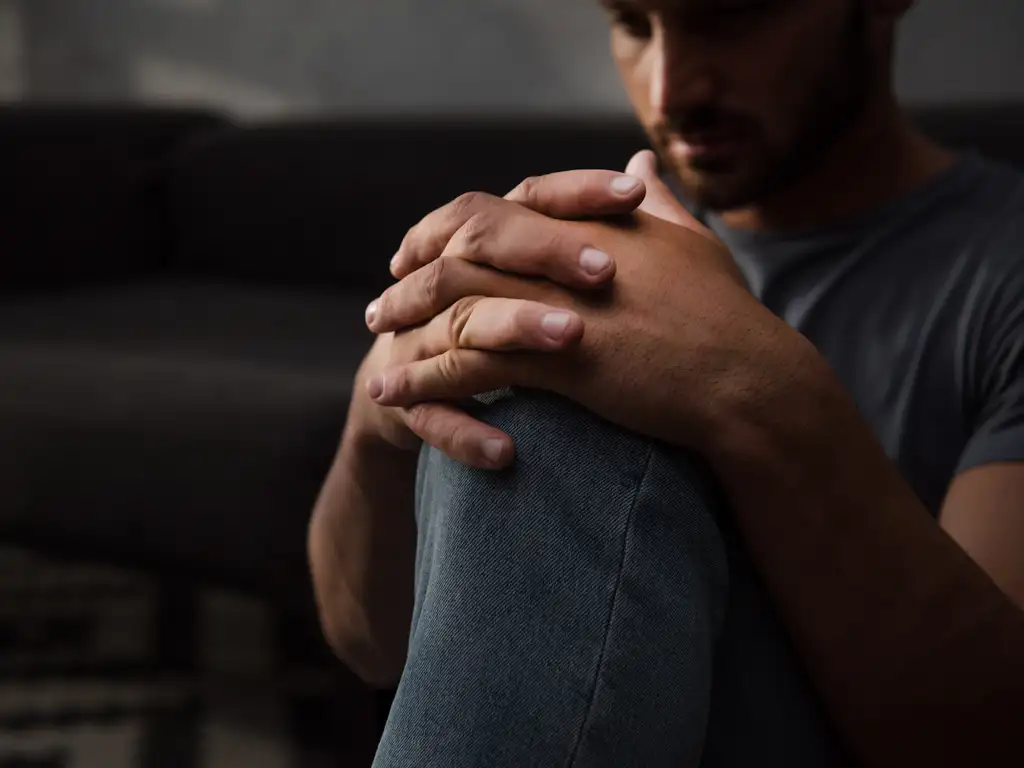Each year, up to 20 percent of the population in the U.S., or more than 115 million people, present to their doctor with symptoms of anxiety disorder, depression, or both.
Approximately 45 percent of these (52 million people), also suffer from an additional mental illness or substance use disorder (SUD). While anxiety and depression often co-occur, it is also fairly common for anxiety symptoms to co-exist with a mood disorder or a substance use disorder as well.

What is Anxiety Disorder?
Occasional anxiety is a natural part of life. It’s built into our DNA along with our “fight or flight” response. If we feel worried or even fearful about a perceived danger, our body responds with an increase in blood pressure and heart rate, for example. Typically, these feelings are temporary and resolve once the perceived danger has past.
Anxiety Disorders
However, an anxiety disorder is another matter entirely. If you are experiencing a persistent feeling of dread or fear on a daily basis, you may have an anxiety disorder. Some common anxiety disorders are:
General Anxiety Disorder involves excessive worry about everyday life. In addition to worrying, other symptoms are: feeling restless and tired, being irritable, and having trouble getting enough sleep.
Panic Disorder, or panic attacks are sudden episodes of intense anxiety combined with physical symptoms, such as intense sweating, dizziness, accelerated heart rate or an inability to breathe.
Phobia Disorder is defined by an ongoing, excessive fear of a particular object or situation. Acrophobia is the fear of heights for example; agoraphobia is the fear of crowded or open spaces.
Post Traumatic Stress Disorder (PTSD), is an anxiety disorder that occurs in people that experience a traumatic, shocking, or dangerous event.
Obsessive Compulsive Disorder (OCD). As the name suggests, this disorder is characterized by thoughts and fears that lead to obsessive and compulsive behaviors. OCD usually revolves around ideas such as a fear of germs, or the compulsive need to check something over and over again, or to arrange objects in a specific manner.

Depression and Anxiety
The Anxiety and Depression Association of America (ADAA) , describes anxiety disorders — which include generalized anxiety disorder , panic disorder , and social anxiety disorder — as being the most common mental health problem in the United States.
The ADAA website states that depression and anxiety are serious disorders. If you or a loved one are experiencing signs of depression and/or anxiety symptoms, it is advisable to seek the assistance of a mental health professional, as soon as possible.
Many people with an anxiety disorder also have a co-occurring disorder or physical illness, which can make their symptoms worse and recovery more difficult. As with all illnesses and disorders, it’s important to find appropriate treatment.
Anxiety and Depression Symptoms
Physical pain is a very common symptom of depression. Often, patients present to their doctor complaining of aches and pains, such as chronic joint pain or back pain. Also, anxiety and depression can contribute to gastrointestinal issues (yes, diarrhea), general fatigue, changes to appetite and sleep disturbance.
There are many factors that can cause anxiety symptoms and depression to manifest. It is well understood that chronic, long term stress can result in clinical depression. Also called major depressive disorder, clinical depression is much more severe and long lasting than the temporary feelings of sadness many of us experience at times.
Continuing depression and anxiety may lead to suicidal thoughts or actions and most often manifests as persistent feelings of sadness, hopelessness, lethargy, exhaustion, inability to concentrate, and acute irritability.
What Causes Symptoms of Anxiety and Depression?
Anxiety and depression symptoms can have a huge negative impact on our lives. Pressure can come on us unexpectedly from several areas at once; a job loss, relationship issues or money problems. If not dealt with, these stressful life events can cascade and become overwhelming, which can eventually contribute to the cause of both anxiety, or depression and anxiety.
Untreated, these mental disorders affect not only our attitude and outlook on life, but can also have a negative impact on our bodies, as well. The risk of suicide by people with mental health issues such as anxiety and depression is 20 times that of the general population. Additionally, anxiety and depression can contribute to physical problems such as high blood pressure, heart problems, and physical pain.
How Do Most People Cope with Depression?
Living with depression and anxiety is very difficult without some type of help. Individuals suffering with both anxiety and depression may have difficulties coping with the everyday ups and downs of life. They may experience challenges with sleep and appetite, have unexplained pain, and experience problems with personal relationships, work or school, and social interaction.
However, individuals who successfully cope with depression and anxiety symptoms began their journey by first changing their circumstances. Either their doctor recommended medication, or changes to lifestyle at their last visit, or perhaps they mentioned to a friend or co-worker that they were having trouble, and found help in that way.
In any case, overcoming a mental disorder like depression is challenging. For this reason, it cannot be stressed enough: if you feel that depression, anxiety disorders are affecting you, it is very important to seek professional help.
Center For Disease Control
The Center for Disease Control has this to say about depression and anxiety:
In general‚ about 1 out of every 6 adults will have depression at some time in their life… …Anyone can get depressed, and depression can happen at any age and in any type of person.
Many people who experience depression also have other mental health conditions. Anxiety disorders often go hand in hand with depression.
People who have anxiety disorders struggle with intense and uncontrollable feelings of anxiety, fear, worry, and/or panic. These feelings can interfere with daily activities and may last for a long time.
Critical Relationship
There is critical relationship between our brains and our physical health. This is especially true with regard to the chemistry of the brain. Depression and anxiety can cause changes in the brain’s chemistry, which can impact levels of neurotransmitters, such as dopamine and serotonin. Because these chemicals have a direct impact on our mood, energy levels and muscle movement, low levels of these neurotransmitters inhibit our ability to function.
Both depression and anxiety can contribute to an array of additional physical and cognitive issues, as well. Individuals with low serotonin and dopamine levels can suffer from a lack motivation, difficulty concentrating, fatigue and of course, anxiety.
Depression Symptoms
Insufficient levels of serotonin also rob individuals of the ability to take pleasure in activities that were once enjoyable experiences, a condition known as anhedonia. Additionally, low dopamine levels also contribute to a persistent feeling of sadness, hopelessness, and a low sex drive.
Depression and anxiety are serious medical conditions, and it is important to try and manage depression to alleviate symptoms, reduce stress and negative thinking.
Types of Depression
Major depressive disorder has several separately recognized types, each of which have similarities but also some differences.
Major Depression – also called clinical depression, is a state where a dark mood is all-consuming and one loses interest in pleasurable activities. Symptoms of this type of depression include trouble sleeping, changes in appetite or weight, loss of energy, and a feeling of worthlessness.
Persistent Depressive Disorder – also called dysthymia. Symptoms include fatigue, a loss of interest in normal activities and a feeling of hopelessness, low self-esteem, decreased appetite, difficulty concentrating and insomnia.
Psychotic Depression – individuals who experience depression with psychosis or psychotic depression have all the symptoms of clinical depression, combined with delusional thinking and hallucinations. Causes for this type of anxiety and depression are not well understood. However, an emotional trauma, such as experiencing a serious illness, divorce or the death of someone close can contribute to this condition.
Peripartum (Postpartum) Depression – Without some form of treatment, women who experience postpartum depression risk developing clinical depression later in life. Postpartum symptoms include difficulty sleeping, irritability, loss of appetite, and difficulty bonding with the infant.
Premenstrual Dysphoric Disorder – PMDD is a more acute form of premenstrual syndrome (PMS), and the exact cause of either one is not known. The chief difference in PMDD is that anger and irritability are combined with the other symptoms of depression and anxiety. Also, PMDD differs from clinical depression in that symptoms ease toward the end of the menstrual cycle.
Seasonal Affective Disorder (SAD) – Episodes of this type of depression usually start at the same time each year, generally during the cold, dreary winter months. SAD can be relieved using light therapy, also the change of season from winter to spring tends to relieve symptoms.
Situational Depression – Whereas other types of depression, such as clinical depression can be chronic and can last or re-occur for years, situational depression is generally shorter in duration but can also be more intense. Episodes of this type of depression are tied to a specific event such as moving to a new location, a job loss, or an illness.
What is the Best Way to Treat Anxiety and Depression?
The best way to treat anxiety and depression is a treatment plan that includes medication combined with talk therapy such as Cognitive Behavioral Therapy, or CBT.
Additionally, lifestyle changes that include a healthy diet, and social and physical activities can be extremely beneficial to our mental well being. We humans are a tribal species and need to stay connected with one another. This connection can give us a sense of belonging, and can greatly improve our general attitude and outlook.
Problem Solving Therapy
Problem solving therapy with a mental health professional can ease symptoms of many of the types of depression mentioned above. This type of therapy can help someone who may be feeling overwhelmed and out of control, regain perspective. Taking positive action to solve seemingly unsolvable problems can reduce anxiety, by returning power to the individual.
There are various causes of depression and anxiety, which can include a combination of factors that are both biological and psychological in nature. For example, current research shows that experiencing sleep problems may actually cause changes in brain function. These changes can in turn inhibit production dopamine, which can cause a myriad of issues, physical and mental.
Exercise and Mental Disorders
As mentioned, regular physical activity generates endorphins and improves blood flow to the brain. This in turn can reduce symptoms of mental disorders like anxiety and depression to a significant degree. Physical activity can also improve some symptoms of mood disorders such as mania.
Endorphins
This wonderful hormone is produced when we exercise, and can reduce feelings of anxiety, depression, and negative mood. Endorphins can increase our self-esteem, and improve our cognitive function, as well.
Besides assisting in feelings of wellness, endorphins are the body’s natural pain killers, and engaging in regular physical activity can reduce physical pain. This in turn can enable us to perceive the positive events that happen in our lives, as well as the negative, to achieve a more balanced outlook.
Other Forms of Treatment
Engaging in a treatment plan which involves talk therapy can reduce the symptoms of anxiety and depression and the persistent feeling of sadness or loss of interest that characterizes major depression. However, in addition to talking about it, there are a variety of other treatments that are designed to work in conjunction with therapy.
Three simple strategies for coping with depression:
Healthy coping skills: talking about it can reduce negative thoughts that make depression worse. Confiding in a therapist can help us see how we can develop healthy coping skills.
Relaxation: depression and anxiety can be relieved by use of several different activities and relaxation techniques such as meditation, or mindfulness.
Physical activity: One word here- endorphins.
The sole cause of depression was once believed to be a chemical imbalance in the brain. However, recent research suggests that there can be more than one factor leading to depression.
A Harvard Medical School study, updated in 2019, identified some other things including genetic predisposition to anxiety or depression, and certain medications, such as antibiotics that cause imbalance in our intestinal bacteria, which have a direct impact on our moods.
Mental Health
Many of the most effective approaches for managing conditions like depression and anxiety are similar. An integrated approach that combines medication and psychotherapy has the highest rate of success for treatment of severe depression and anxiety disorders; especially when combined with lifestyle changes that include physical activity, such as regular exercise and a healthy diet.
Cognitive-Behavioral Therapy (CBT) for depression and Exposure Therapy for anxiety are two of the most common and effective approaches used to treat these conditions.
CBT helps an individual identify, challenge and change negative thought patterns to improve their emotional responses and develop coping strategies.
Exposure therapy involves exposing the patient to the source of the fear or anxiety in a safe environment, and without causing any danger to the individual. This method can help individuals overcome specific fears that may cause anxiety. Once used primarily to treat PTSD, this therapy has been found effective for the treatment of both anxiety and depression, as well as certain phobias.
Turning Point of Tampa
At Turning Point of Tampa, we recognize that the need to treat mental health issues along with addiction and eating disorders is crucial to the individual’s long term recovery. That is why all clients at Turning Point of Tampa are evaluated by our board certified psychiatrists, who have also been certified through The American Society of Addiction Medicine.
Turning Point of Tampa has been offering Licensed Residential Treatment for Addiction, Eating Disorders and Dual Diagnosis in Tampa since 1987.
Resources:
The Substance Abuse and Mental Services Administration (SAMHSA) provides an extensive list of online services for those in recovery, for people feeling anxious or depressed due to Covid-19 or for anyone in crisis.
Another source for anyone experiencing anxiety or depression is the National Alliance on Mental Illness (NAMI) Helpline at 800-950-6264 M-F, 10 am – 6 pm, ET. For crisis situations, text “NAMI” to 741741 for 24/7, confidential, free crisis counseling.
American Psychiatric Association known as the APA has a great article on depression on their website psychiatry.org

